I was writing the other day about the restorationChippendale salonhow difficult it was to get rid of the crowd of curries infesting the furniture. Seeing how the furniture was affected due to long storage in an unsuitable environment with very good conditions for the development of the woodworm, I decided to tell you more about these insects, their development cycle, how to prevent them and the recommended treatments in case of infestation.
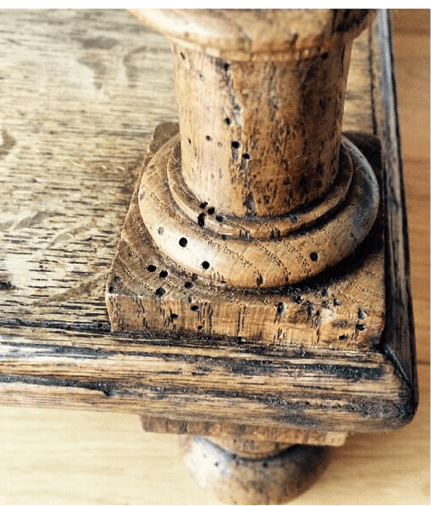
The "pet" that feeds on wood is called a car, plural cari. Because it makes holes and grinds the wood some call it a carie/carie, but the term is not correct. The carrion lives only in wood, feeding on wood, so the phrase "wood carrion" is pleonastic.
The name car is given to several insects of the order Coleoptera that live in wood. The best known and most common in the temperate zone, and therefore in our area, is Anobium punctatum. It feeds on the softer part of wood - alburn - which makes it less dangerous to the structural strength of buildings. If the wood has been attacked by fungi and mould which make it vulnerable, then the woodworm can also get into the harder areas of the wood. However, there are also species of curry that feed on hardwood (Xestobium rufovillosum).
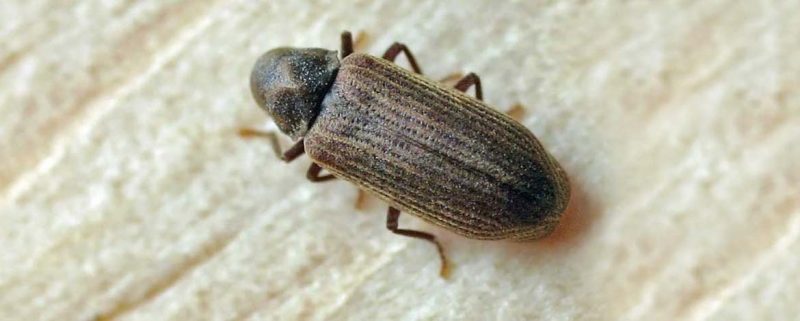
The adult insect looks like a rectangular, greyish-brown, hairy beetle, 4-6 mm long. When we see these insects the wood has most likely already been infested. The beetle emerges from the wood at maturity, having spent its entire life in the wood, feeding on it.
Adults come out of the wood in spring-summer, from May to August-September. Their life out of the wood is short, they basically live to produce offspring and then die. The woodworm does not live in live wood but only in wood that has been cut for at least 4-5 years and without bark. The female lays clusters of up to 50 eggs, which look like small white pearls, in cracks in the wood, in old holes or under the wood. Whitish cream larvae develop from the eggs, which are initially 1 mm long. For 4-5 years the larvae stay in the wood and feed on it, digging channels at random. It then reaches 6-7 mm in length and begins to transform. It first goes through the pupal stage, and for this it moves towards the surface of the wood, digging a burrow very close to the surface. The larva's pupation takes 6-7 weeks. From the pupa the adult emerges and digs round holes 1-1.5 mm in diameter in the thin layer of wood and emerges to the surface to breed, thus resuming the cycle.
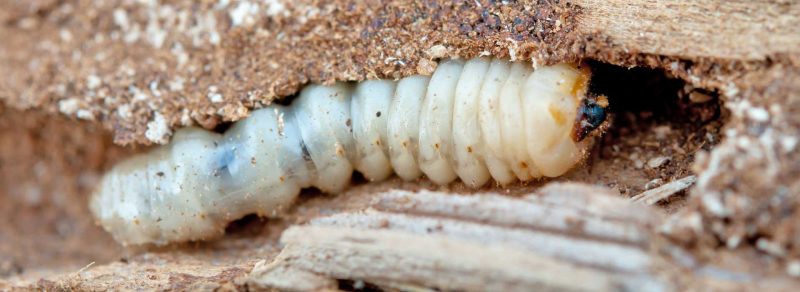
Cavities do not develop in all conditions, they need moisture. That's why they appear in wood stored in poor conditions, in old, damp houses. Wood with humidity above 16% and above 64% relative air humidity are a very good environment for development. This is one of the reasons why it is recommended that wood used for furniture should have humidity below 12%, too low for decay infestation.
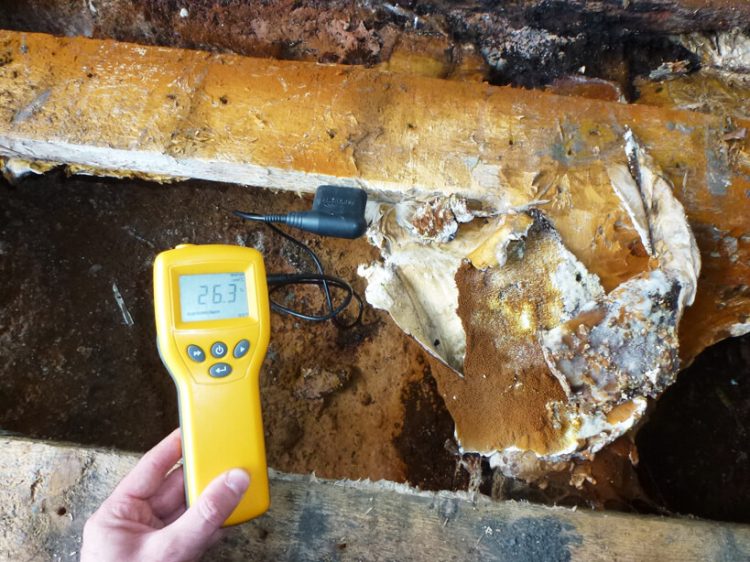
The preferred wood of Anobium punctatum is resinous, but it can also be found in fag, birch, cherry, arin and other such species. Attacks less oak treewhich is a hardwood, and exotic species. That's why old pieces of oak furniture hold up much better over time. But this is not a general rule. In environments with very high humidity, fungi and moulds grow on the wood, weakening its structure and making it accessible to woodworm.
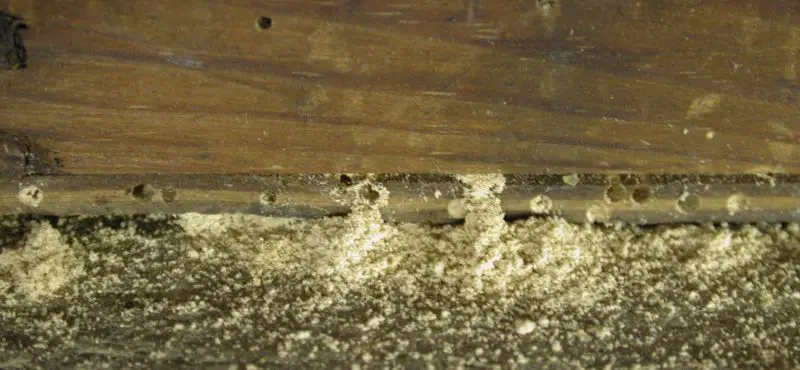
Insects will attack any wood in the house if the right conditions are met. We find it in furniture, flooring or floorboards, doors, panelling, even in the beams and the load-bearing structure of the house. It is sufficient for the relative humidity of the air to be above 60% for more than a month and for the wood to be above 14-15%. After a long period of high humidity the wood can be so attacked that the furniture, flooring or panelling is totally compromised.
As far as the resistance structure is concerned, things are not so bad. By feeding only on the sapwood, i.e. the outermost part of the trunk, the resistance poles are not crossed by decay and thus their strength is not affected. In some countries (England, for example) it is forbidden to use wood with more than 25% sapwood in construction. This means that the strength structure will not be affected by decay. However, it should not be forgotten that, under certain conditions, decay can also reach the centre of the trunk, in the heartwood area.
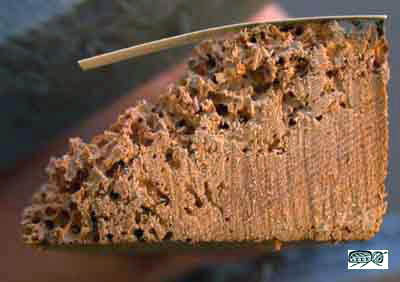
The best way to keep wood safe from carrion beetles is prevention. It is recommended that treated wood should be used, especially for construction, flooring, panelling and other fittings. Treating wood can be done by impregnating it with various chemicals or by using pressure to make it harder. Unfortunately, many of the objects attacked by decay are old, from the period when wood was not treated before use.
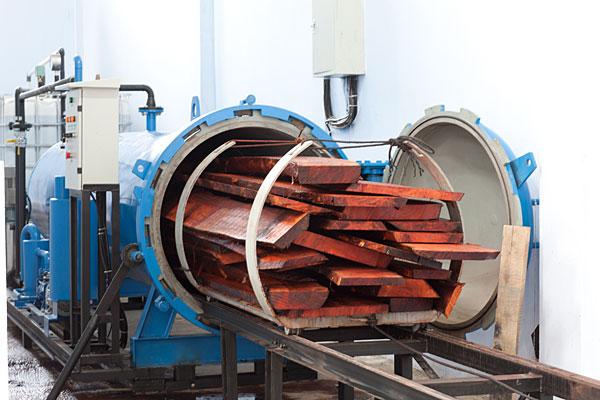
The larva is very resistant and requires aggressive and repeated treatments to kill it. In addition, the labyrinths dug into the wood are so small and winding that sprays do not always reach them. That's why, when treated, objects must be left for at least 24 hours in that environment. When you have areas of your home or many large infested objects it is best to call in the specialists. Besides the substances they also have the necessary conditions for the treatment to succeed.
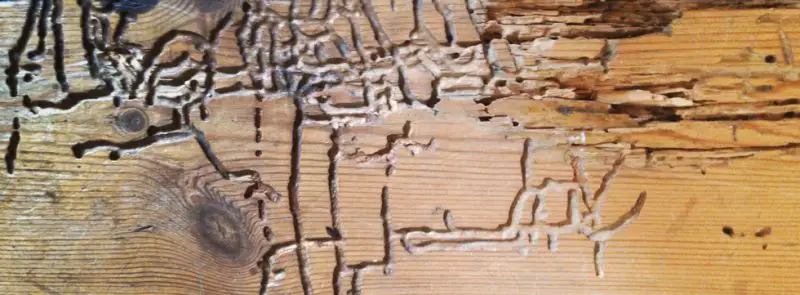
Various substances are used against carids. The most common is Borax (sodium borate - an inorganic boron-based compound). Similar products are Boron or ProBor. These are trade names, depending on the company that produces them, but they are all based on sodium borate. Another product is Permethrin, an organic chlorine-based substance. It is also used to treat mange or against lice. Methyl bromide is another chemical that was used a lot in the past, but is gradually being phased out because of its toxicity. All these products are used as concentrated solutions and sprayed on infested wood.
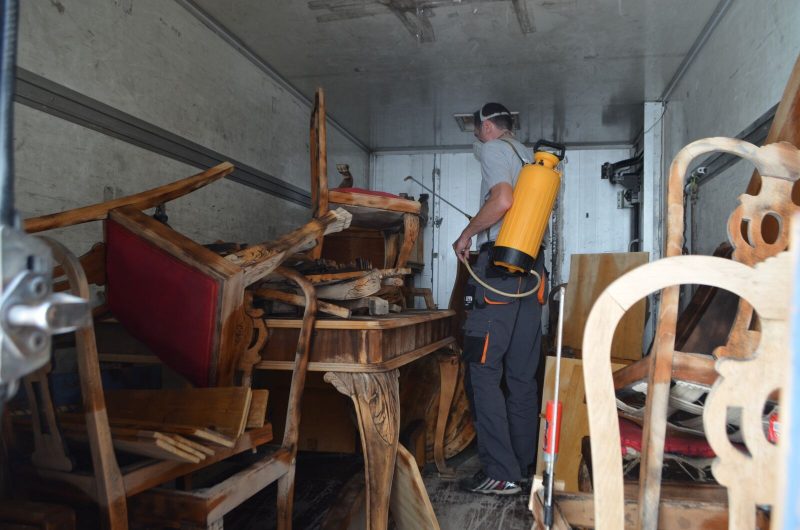
The operation is repeated several times to make sure the larvae have been killed. A clue is the lack of specific noise (you can hear it very well when it is quiet) and wood dust around the holes. Sometimes, to reach the larvae, the toxic substance is introduced through the channels with a syringe.
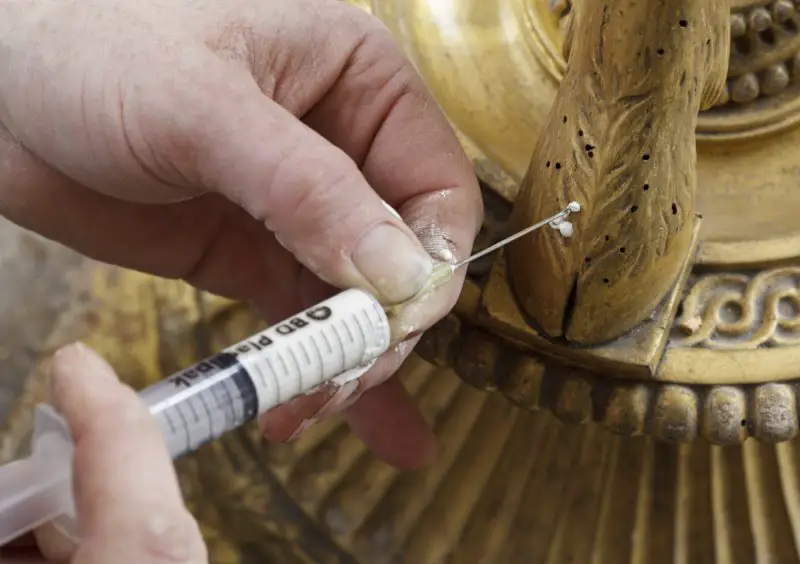
Because of the toxicity of the products or the impossibility of using them in some environments (museums, collections, etc.), treatments have been developed that attack only the carrion without harming the environment. These treatments are based on temperature variation. At temperatures above 50 grd.C or below -20 grd.C the carrion does not survive. However, they adapt easily, so the temperature must be lowered sharply and then returned to normal temperature. Cold-warm cycles are repeated several times. Treatments must be done carefully so as not to damage the objects. There are also ultrasound and microwave treatments.

Another treatment is with nitrogen and carbon dioxide. The gases are sprayed into the enclosure until the oxygen ratio falls below 0.2% and is kept there for 2 weeks. The caries cannot live without oxygen. Non-chemical treatments kill cavities but do not provide protection over time.
There are also natural treatments for both prevention and treatment. Some seem very hard to believe, but there are many who say they are effective. Find the methods described at length here.
Often, getting rid of decay requires that parts of the infested wood be replaced. It's best not to go to this stage because valuable things can be lost. If you see adult insects flying around, round holes in the wood or hear specific noises don't wait any longer. Look for specialised companies and start treatment immediately.
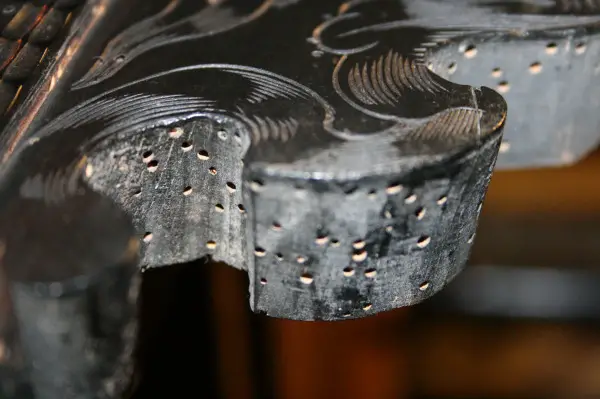


















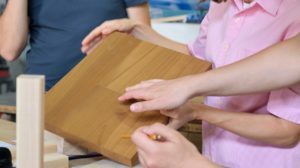

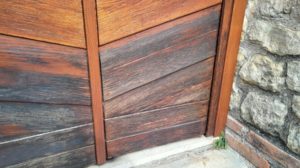
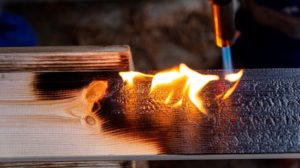
[...] unlike other building materials, wood is vulnerable to attack by insects (curries, termites). To protect it, it must be treated with suitable substances. Treatment can be done [...]
Hello.Can Borax pentahydrate be used against caries?Thank you very much.
Hello!
Borax is used as a flame retardant and fungicide. It is also used as an insecticide, in insectofungicidal mixtures, but I found no reference to it destroying cavities. They are very resistant and need more aggressive treatments.
Find more information about combating carrion in the link below.
All the best!
https://revistadinlemn.ro/2018/08/23/tratamente-naturale-impotriva-carilor/
Good evening! My name is Teo Cangea, a subscriber to your magazine. I am desperately crying out for help. I built a house in the summer, somewhere in the country, on a wooden structure. The house is finished on the outside (polystyrene was put over the OSB and then decorative plaster). A few days ago, going to the cottage in the country, I was astonished to find fine traces of sawdust in some places inside the house. On the floor I found a lot of dead flies. In the two days I stayed at the cottage, I saw many small insects flying around inside, with transparent wings, similar in appearance to miniature dragonflies. I asked someone about the case and he told me it was curries. Please tell me what to do in this situation. If it is indeed curries, how can I destroy and stop their development? Thank you.
Hello!
It may be curries that you have unknowingly brought inside the wood. The moisture inside has facilitated their development and their emergence to the surface. But they do not necessarily have to be curries. Mature curries live very little after they emerge from the wood. They lay eggs and die. If they are curries it will be harder to get rid of them, being all covered up. If you don't live there, you should buy some anti-caries solution, spray it all over the house, close it and leave it for a week, then repeat the operation 2-3 times. The solution should be for pest control, not prevention. Find solutions at Casa Iancu or Bochemit. Casa Iancu will also offer advice. It is good to call them to identify the insect and recommend the most appropriate treatment.
You can also find information about curries and treatments in the link below.
Thank you for being our subscriber.
All the best!
https://revistadinlemn.ro/2018/08/23/tratamente-naturale-impotriva-carilor/
Hello! Please tell me kindly how and what you managed to do against the carrion? I also made a new house and the top Nu is all sewers because of the thistles. Thank you and I am waiting for you to inform me too. Beautiful day!
Hello!
Thistles are very hardy and you probably brought them into the house using infested wood. If you live there it is quite difficult because you should spray the recommended substances (boron or chlorine based - you can find them at specialist shops or on the net), leave the house closed for a few days, then resume the operation. Make sure that the substances get into the gutters, spray directly on the infested wood. The operation is a dangerous one and you should call in specialist firms.
The development of cavities is favoured by the humidity in the house which should not be high and there should be no condensation.
All the best!
No curries! They're ephemerides! I have the same problem!
The plural of caries is cavities. NOT " CARIES " !
You are right. Except that the article is talking about the wooden chariot, not the tooth decay.
Hello! Can you recommend a company that can deal more efficiently with the problem of carts? I mean by methods such as ultrasound or hot-cold alternation, because with substances I have also tried and failed to reach their internal canals. Thank you!
Hello!
Unfortunately, we don't know of any company that uses such methods. I have contacted people involved in restoration activities and am still waiting for answers. I will get back to you when I receive information.
All the best!
Hello, I noticed a couple of holes in the doors of two rooms in the house this week and I think they might be curries. On one door there are no more than 10 holes and on the second I noticed 2 smaller ones. Do you think I could do something or would it be better to change the doors?
Good evening!
You should make sure there are larvae inside. It is possible that those holes existed before and you didn't notice them and there are no more grubs inside. If you find fine wood dust in the morning next to the holes, it means there are larvae inside.
Try to put white spirit (gas, petrosin) into each hole with a syringe and then cover the hole on the surface with wax (from a candle). Repeat the operation after one week. After another week remove the wax plug and check for wood dust.
A safer (and more aggressive) solution is Bochemit. It is a solution with very good results in eradicating ticks. It can also be introduced into the holes with a syringe.
My opinion is that you should first assess the situation and try to get rid of the curries before getting rid of the doors.
Below are 2 links that may be of use to you.
All the best!
https://revistadinlemn.ro/2018/08/23/tratamente-naturale-impotriva-carilor/
https://revistadinlemn.ro/2020/07/30/cum-scapi-de-cari-si-alti-daunatori-ai-lemnului-solutii-anticarii-lemn/
[...] piece of furniture in time you risk that the other wooden objects are infested. Here you can find a more detailed article about this, with the caveat that there are effective solutions to [...]
Hello,
I work in a bread factory that uses spruce-based spruce baskets for the dosing. These baskets are tarnished and stand in an environment of humidity 50 - 52% and temperature 30 - 40 gr. Over time on these baskets especially on the sole have appeared holes like those produced by caries. Apart from tribolium I have not particularly other types of insects present. Is it possible that these cavities are produced by tribolium? How can we get rid of these insects?
Good evening!
Tribolium is a flour beetle and I have not found any data showing attacks on wood. What you have appears to be curry ( Anobium punctatum). The larvae were already in the pine wood and the very good conditions (high humidity and temperature) caused them to develop and the adults to emerge from the wood causing holes.
Because it is a food you should use natural methods or materials. One solution is glass water (sodium silicate), but it has a stronger effect as a prevention. Some other ideas for protection with natural products can be found in the link below.
All the best!
https://revistadinlemn.ro/2018/08/23/tratamente-naturale-impotriva-carilor/
Hello! In your article you talked about the specific noise that cavities make. What is this noise? Last night I couldn't fall asleep because of a noise coming from the wood, but I couldn't tell if it was from the floor or the door and I don't know if it's curry noise or something else, because I don't know what is the specific noise made by curries! Could you please enlighten me?
Good evening!
It sounds like a gnawing sound, as if the wood is being given to a grater. The noise is continuous and can be heard when it's quiet.
Control the wood. If it has small holes and there is wood dust in the right side, it's definitely decay.
All the best!
Hello,
Please help me with some information.
A fine white dust falls on the kitchen furniture (melamine pallets) behind the wall units. I also saw 2-3 beetles of approx. 2 ml. Do you think it could be wood decay?
Can the pall be affected by curry?
What about laminate flooring?
What commercial solutions do you recommend for this?
Thank you!
Hello!
Woodworm rarely attacks chipboard or MDF, but it is not excluded, especially when they are already in the house and have no other food source (wood). The favourite place is indeed behind furniture.
Melamine flooring is not wood, it is paper impregnated with paper. Find here more information. Maybe the skirting board, if it is wood, can be attacked.
In my opinion the most effective solariums in case of curry infestation are those from Bochemit. You have below link with more information. There are also non-chemical treatments (very high or very low temperature, etc), but they are difficult to apply in such conditions. About natural treatments against woodworm you can find information here.
All the best!
https://revistadinlemn.ro/2020/07/30/cum-scapi-de-cari-si-alti-daunatori-ai-lemnului-solutii-anticarii-lemn/
Hello,
I made a decorative object from a wooden log - the log was actually sliced. The wood had visible traces of decay so I kept the wood slices for about 17 hours in chlorine water. Is this an effective method of destroying curry larvae?
Sincerely,
Catalin Tene
Hello!
Chlorine is a fairly aggressive agent, but is used more against mould. It also depends on how concentrated the solution was. You should check in one of the holes to see if there is still larva and if it is alive. You can do this with a needle that you insert into the hole.
One good thing is that there are slices of wood and the solution can penetrate deeper. Check though, just in case. Being a decorative object it will sit next to other wooden objects and not infest them too.
I leave below a link with natural treatment solutions.
All the best!
https://revistadinlemn.ro/2018/08/23/tratamente-naturale-impotriva-carilor/
Thank you!